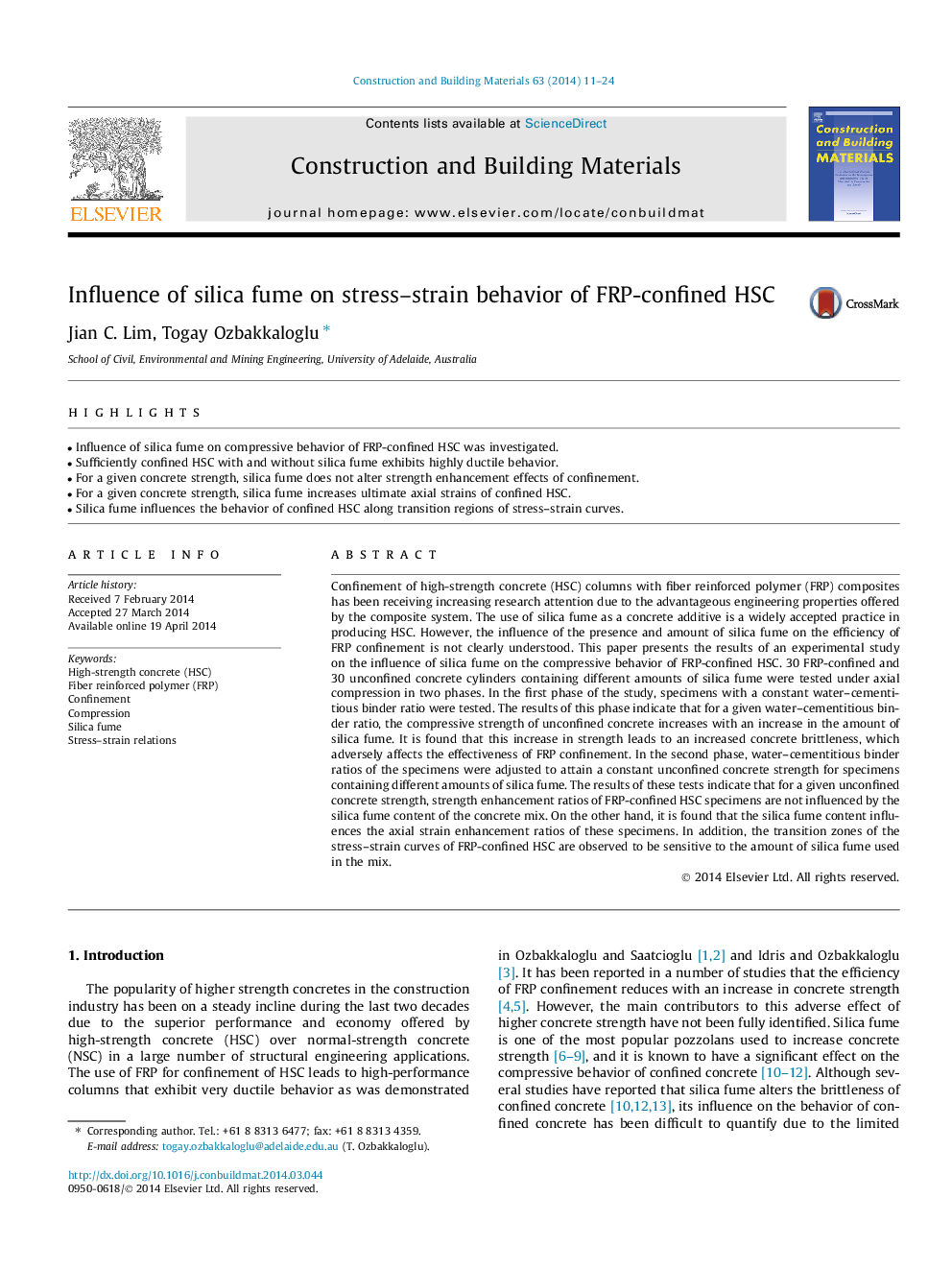| Article ID | Journal | Published Year | Pages | File Type |
|---|---|---|---|---|
| 257539 | Construction and Building Materials | 2014 | 14 Pages |
•Influence of silica fume on compressive behavior of FRP-confined HSC was investigated.•Sufficiently confined HSC with and without silica fume exhibits highly ductile behavior.•For a given concrete strength, silica fume does not alter strength enhancement effects of confinement.•For a given concrete strength, silica fume increases ultimate axial strains of confined HSC.•Silica fume influences the behavior of confined HSC along transition regions of stress–strain curves.
Confinement of high-strength concrete (HSC) columns with fiber reinforced polymer (FRP) composites has been receiving increasing research attention due to the advantageous engineering properties offered by the composite system. The use of silica fume as a concrete additive is a widely accepted practice in producing HSC. However, the influence of the presence and amount of silica fume on the efficiency of FRP confinement is not clearly understood. This paper presents the results of an experimental study on the influence of silica fume on the compressive behavior of FRP-confined HSC. 30 FRP-confined and 30 unconfined concrete cylinders containing different amounts of silica fume were tested under axial compression in two phases. In the first phase of the study, specimens with a constant water–cementitious binder ratio were tested. The results of this phase indicate that for a given water–cementitious binder ratio, the compressive strength of unconfined concrete increases with an increase in the amount of silica fume. It is found that this increase in strength leads to an increased concrete brittleness, which adversely affects the effectiveness of FRP confinement. In the second phase, water–cementitious binder ratios of the specimens were adjusted to attain a constant unconfined concrete strength for specimens containing different amounts of silica fume. The results of these tests indicate that for a given unconfined concrete strength, strength enhancement ratios of FRP-confined HSC specimens are not influenced by the silica fume content of the concrete mix. On the other hand, it is found that the silica fume content influences the axial strain enhancement ratios of these specimens. In addition, the transition zones of the stress–strain curves of FRP-confined HSC are observed to be sensitive to the amount of silica fume used in the mix.
